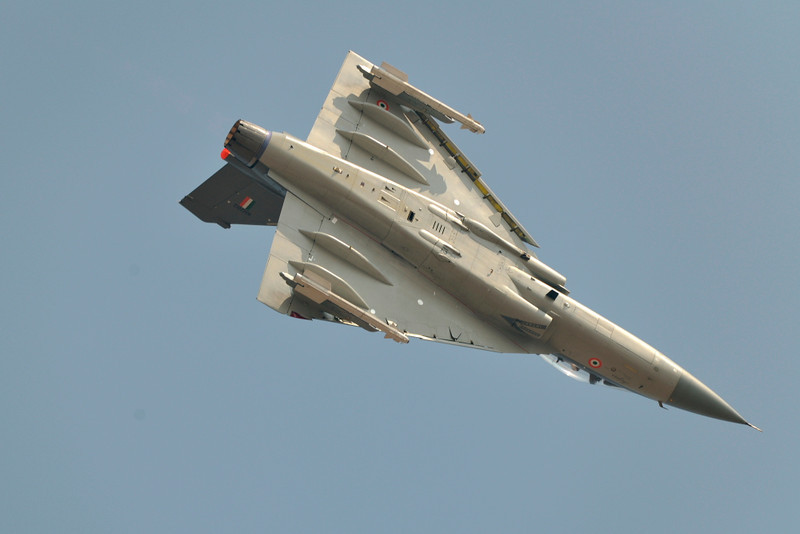Jayram wrote:A dumb question but I have always wondered about this. Given that the LCA's thrust to weight ratio is >1 why should the AOA matter in certain scenarios ie in a knife fight? In those scenarios the LCA can/should basically behave like a rocket and not need any lift at all with the engine basically powering the craft at what ever angle (limited of course by the G forces) it needs no? Yes handling authority and recovery would still be an issue but turn radius should not... no?
Even rockets with a thrust weight ratio of >1 can spin uncontrollably so t/w ratio is no guarantee
I am no expert but the crucial thing here is airspeed.
There are three forces acting in an aircraft
1. Engine thrust acts in the nose to tail axis.
2. Because of forward movement from engine thrust, the wings generate lift. which is always from bottom of plane to top - even if the plane is not flying parallel to the ground. If the plane has banked 90 deg to left, lift acts towards the left
3. Gravity - this is always towards the ground.
In level flight at constant speed, the forward thrust (1) creates lift (2) that cancels out gravity (3) exactly
But imagine a situation where the pilot suddenly pulls his nose up to 45 degrees. Now he starts climbing. Thrust (1) remains the same. Lift (2) reduces because it is acting at 45 deg up and 45 deg backwards. Gravity (3) remains the same. Because lift is now acting less effectively upwards and partly backwards AND the plane is gaining height the plane loses speed unless more energy can be injected immediately. The moment the plane loses speed the lift reduces further - aggravating the above situation further. The pilot could respond to this by slamming the throttle forward, but engines take a finite amount of time to spool up, turn faster and increase thrust.
Depending on the amount of speed that had been bled away by lifting the nose and the delay in getting more thrust, the airspeed could become too low to generate useful lift. At that point the aircraft, whose nose is now pointing 45 degrees upwards, starts losing height. Now remember that if it starts losing height (falling) with nose at 45 deg up, the flow of air over the wings will reverse, and start going from back to front as the plane loses height.
This is a terrible thing. The plane is not meant to fly with airflow in odd directions like back to front over wings. The aircraft starts coming down in a spin. Once it is in a spin its behaviour can become very unpredictable. In trainer aircraft a lot of effort is put into making this behaviour predictable so that if he trainee pilot is in a spin he can react and do something that helps the plane recover, provided the spin occurs at a high enough altitude. At low altitude the plane may crash.
In order to avoid such a situation the airspeed must never ever come below a particular value when the plane is above a particular angle of attack. Or inversely - a FBW plane should prevent the pilot from achieving a particular angle of attack that may cause a stall if the software detects that the airspeed is inadequate.
Under normal circumstance any pilot in any aircraft on manual control can pull his nose up into whatever angle of attack that takes his fancy. 20 degrees, 40 degrees, 60 degrees - whatever. As long as his plane has adequate airspeed and reserve thrust at that AoA he will merely end up doing a high G loop or turn. If effective airspeed is inadequate, his plane will stall and he will start falling and his plane may go into an uncontrollable spin. In a fundamentally unstable aircraft like a modern FBW fighter like the LCA which is tail heavy, spins could be even less recoverable than in a stable trainer

